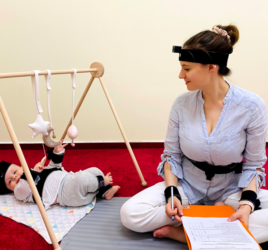
Who am I?
Who are you? For many of us, this is a complicated and potentially confusing question. You might think something like “Well, it depends on where I am or who I’m with.” You might respond, “I’ve changed so much since I was younger, I’m certainly not who I used to be.” Others might respond thinking “I know clearly who I am and what is important to me.” All of these responses are expressions of identity. Broadly speaking, identity is the collection of thoughts, feelings, and behaviors that comprise an individual’s sense of who they are and how they fit in the world.
Essentially, identity is infused throughout, from the specific way that we greet the employee behind the counter at the local market, to the very broad influences of cultural contexts and the effects of social injustice, poverty, and privilege. Scholars agree that the formation of a positive and integrated identity is an important developmental task. Those who struggle to form a coherent sense of self have been found to suffer poorer mental health, difficulty in close relationships, and even poorer physical health.
THE COMPLICATED CONTENT OF IDENTITY
The overarching task of identity formation is to synthesize an integrated sense of self that feels whole and coherent.
Much of the empirical work related to identity stems from the theoretical work of Erik Erikson (1959, 1968). Erikson posited that identity work, the task of developing and consolidating the sense of self, begins in earnest in adolescence and continues across the lifespan as transitions and new challenges emerge. Erikson assumed that identity, for each individual, is comprised of multiple, potentially conflicting self-conceptions. The overarching task of identity formation is to synthesize an integrated sense of self that feels whole and coherent.
Our recently developed model of identity content draws on Erikson’s construct of identity configurations to help us understand exactly what it is that we are negotiating when we engage our identity work (Galliher, McLean, & Syed, 2017), Identity content refers to the specific identity labels that we endorse (e.g., teacher, sister, athlete) and we have outlined four levels of identity negotiation.
- First, we explored the navigation of multiple domains of identity. Specifically, each individual tackles the job of integrating a professional or career identity with a spiritual, religious, or moral identity, and also with identities that capture cultural or ethnic background, gender, and sexual orientation – to name only a few. We are “born in to” some aspects of our identities, such as race/ethnicity and biological sex. These components of identity are referred to as ascribed identities. Our task is not necessarily to choose or develop those identities, but rather to figure out what they mean to us and how we want to express them. Other components of identity are chosen or voluntary, such as an identity as an athlete or as an engineer. These components of identity can more readily be understood as “created.”
- At the second level of identity negotiation, our identities are also defined by our social roles, and most of us strongly relate to the identity labels that those roles provide for us (e.g., mother, son, spouse). Our social roles also intersect with the domains of identity at level one.
- All of the components of identity, however, are shaped by the third level of our model – the broad cultural and historical context in which we live. Of particular relevance at this level are the forces of discrimination, prejudice, and privilege in shaping social influence.
- Finally, our identities “play out” in our everyday actions and decisions – our leisure activity choices, dress and style, food choices, and other day-to-day details.
THE CHALLENGE OF IDENTITY INTEGRATION
The task of integrating the components of identity can be challenging. Some aspects of identity may feel as if they don’t fit well together.
The task of integrating the components of identity can be challenging. Some aspects of identity may feel as if they don’t fit well together. Take, for example, the transition to parenting. Those who strongly identify with a professional identity may worry that acquiring an identity as a parent will detract from their ability to maintain their strong professional role. For some, it may feel difficult or even impossible to truly be both a good parent and a good worker. As another example, consider the college student who leaves a traditional and conservative family and home community for university, and develops a liberal political identity in his or her new environment. Here the struggle may be to balance the developing liberal political identity with existing commitments as a good son or daughter and a faithful member of the community.
In such circumstances, we may feel as if we are forced to choose one aspect of ourselves over another. We may decide to try to keep them both, but each in its “proper spot”- the college student might engage in political activism at university, but choose not to challenge political issues in his or her home community. We may strive for a compromise – the new parent may have to both let go of some professional goals or aspirations and also seek some support in parenting in order to maintain both aspects of his or her identity. Consider the strategies you use in your own life as you build your own identity, and return to the original question once more. Who are you?
Note: Image by Tanja Heffner on Unsplash
References
Erikson, E. H. (1959). Identity and the life cycle: Selected papers. Psychological Issues, 1, 1-171.
Erikson, E. H. (1968). Identity: Youth and crises. New York: Norton
Galliher, R.V., McLean, K.C., & Syed. M. (2017). An integrated developmental model for studying identity content in context. Developmental Psychology, 53(11), 2011-2022. http://dx.doi.org/10.1037/dev0000299



